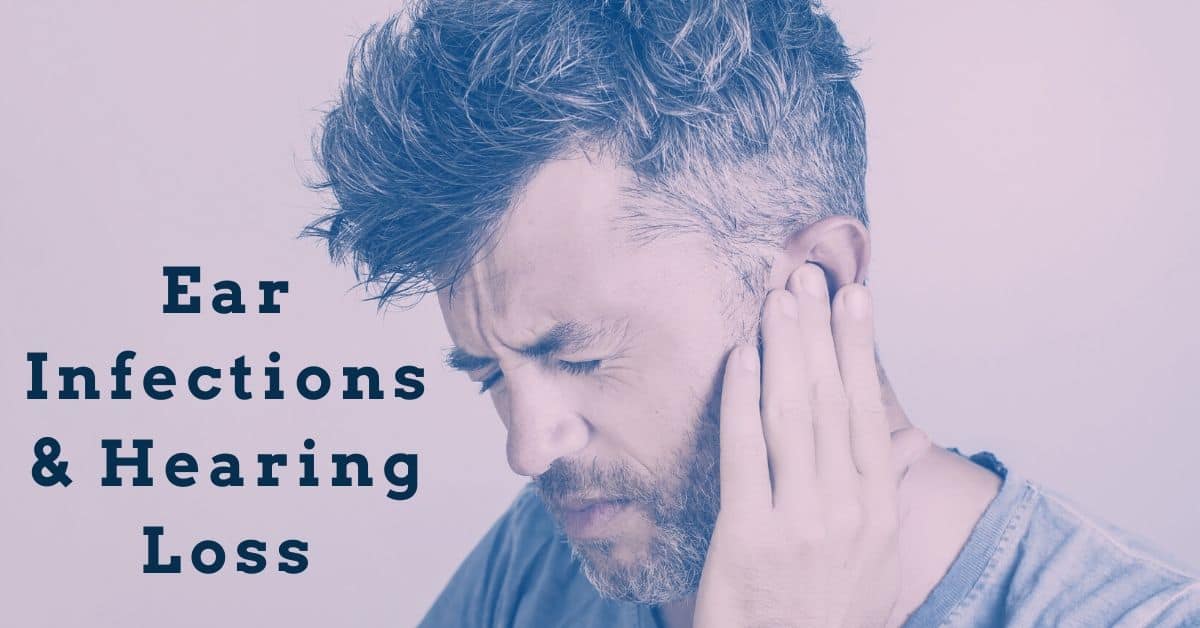
Do you have pain in your ear? Ear infections are common among children, and adults can also experience the discomfort of swelling in the ear. Not only are ear infections painful, they can cause temporary or permanent hearing loss.
Two Types of Hearing Loss
There are two main type of hearing loss. Sensorineural hearing loss is caused by aging or exposure to noise, and this hearing loss is due to damaged cells in the inner ear. When the cells are damaged, they will no longer transmit sound from your surroundings up the auditory nerve the brain. Conductive hearing loss, on the other hand, is from a blockage in the ear canal or the middle ear that prevents sounds from ever reaching your inner ear.
Conductive Hearing Loss
Conductive hearing loss can affect people of all ages, and often has a very sudden onset. It may be in one or both ears, and the blockage will make sounds seem muffled of fuzzy. The causes of conductive hearing loss include:
- An ear infection in the ear canal or middle ear.
- Poor Eustachian tube function, preventing fluid from draining normally from the middle ear.
- A buildup of earwax in the ear canal.
- A head or neck injury that affects the ears.
- A punctured eardrum.
- Cholesteatoma, or a growth of skin in the middle ear that prevents normal ear function.
Ear infections are one of the most common causes of conductive hearing loss, and both outer and middle ear infection affect hearing.
Ear Infections & Hearing Loss
Not only is an ear infection painful, it can cause temporary or permanent hearing loss. An ear infection in either the ear canal or middle ear will lead to a build up of fluid in the ear, blocking sounds from reaching the inner ear.
A middle ear infection is known as otitis media. The middle ear will fill with fluid, and the ossicle, or tiny bones in the ear, won’t be able to move, or send sounds to the inner ear. An outer ear infection, commonly knowns as swimmer’s ear, is often caused by water trapped in the ear canal and will also lead to sudden hearing loss.
Signs of an Ear Infection
Ear infections are often very painful, and you’ll feel a lot of pressure and discomfort in the ear due to swelling. If the infection is in the ear canal, you’ll also notice a discharge from the ear. An early sign of an ear infection is changes to your hearing. Sounds around you will seem very muffled, or as though you’re listening underwater, and it will be very difficult to understand speech. Hearing loss due to an ear infection usually has a very sudden onset, and may be accompanied by a sense of dizziness or even nausea.
Ear infections usually develop during a cold or flu when the respiratory system is blocked. As the back of the throat becomes inflamed, or you experience swelling in the lymph node, the Eustachian tubes that equalize air pressure in the middle ear are restricted. They’re not able to drain fluid buildup, or equalize the air, and this can lead to an ear infection, or even a ruptured ear drum.
Children are more susceptible to ear infections than adults, so watch for early signs of pain, or pulling on the ear. Children also have more horizontal Eustachian tubes that are less able to drain fluids from the middle ear.
Treating Ear Infections
Most ear infections are treated with antibiotics that attack the infection, reduce swelling in the ear, and allow fluid to drain normally. Hearing loss due to an ear infection is often temporary. Once the infection has cleared, your ear will be able to function normally, and you’ll have clear hearing. Those with chronic ear infections may need further treatment, such as inserting a small tube in the ear drum to drain fluid and prevent future infections.
Treating Hearing Loss
After an ear infection, your hearing may not return to normal, and you’ll need to explore your treatment options. Start with a comprehensive hearing test to get a clear picture of your hearing health, and find out exactly what sounds you’re missing. Hearing aids are the best treatment available to hearing loss caused by an ear infection, and with hearing aids you’ll be able to enjoy a great quality of life.
